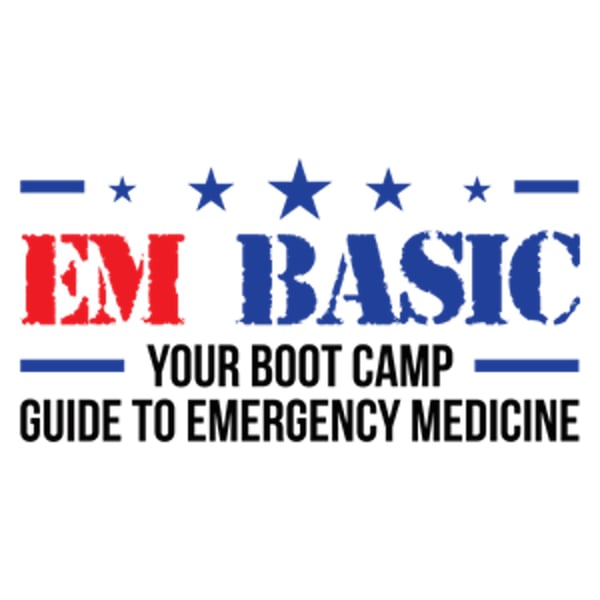Ortho Inservice Review- Part 2
EM Basic
EM Basic LLC
4.6 • 665 Ratings
🗓️ 30 January 2017
⏱️ 17 minutes
🧾️ Download transcript
Summary
This is Ortho Inservice Review Part 2 which will cover injuries to the wrist and hand. This screencast originally appeared on the Emergency Board Review Podcast in 2012.
Transcript
Click on a timestamp to play from that location
| 0:00.0 | Hey, everybody. This is Ortho Review Part 2. We're going to be covering the wrist, |
| 0:16.6 | hand, and lower extremities for emergency board review podcast. |
| 0:22.2 | Again, my name is Steve Carroll. |
| 0:23.6 | I run the Ambas podcast. |
| 0:27.6 | And as always, I have to say that this screencast does not represent the vizier opinions of the Department of Defense, the U.S. Army, or the Fort Hood Post Command. |
| 0:30.5 | So let's get started. |
| 0:31.9 | So these are the first things that we're going to talk about, some wrist fractures and dislocations. |
| 0:36.2 | We'll go through each one of these individually. So this is just a plain, normal x-ray of the wrist. You'll see that you have all your |
| 0:44.0 | carpal bones here, your metacarpals here, your radius, your ulna, your pisciform kind of hangs out in this |
| 0:50.0 | general area. We'll go over this a little more. So the first one to talk about is a lunate |
| 0:54.9 | dislocation. So this is a fush fall into an outstretched hand with significant force. So you're |
| 1:02.2 | going to see the spilled teacup sign on the lateral or the piece of pie sign on the apiece |
| 1:07.5 | x-ray. Basically the lunate should like, kind of like a rectangle on a normal |
| 1:14.5 | wrist x-ray. So if you look here, you kind of see that, you know, the lunate is kind of rotated |
| 1:20.7 | here. It kind of looks like a piece of pie or as Cartman from South Park would say, piece of pie. |
| 1:25.6 | So that represents a lunate dislocation. |
| 1:29.9 | And then on the lateral view, |
| 1:31.0 | you're gonna see what's called the spilled teacup sign |
| 1:33.4 | where the lunates kind of tilted onto its side. |
| 1:36.3 | So as far as their dispo, they're gonna get reduced by ortho. |
| 1:40.0 | Complications can be median nerve injuries, |
| 1:42.5 | acute carpal tunnel syndrome, and avascular necrosis. |
... |
Please login to see the full transcript.
Disclaimer: The podcast and artwork embedded on this page are from EM Basic LLC, and are the property of its owner and not affiliated with or endorsed by Tapesearch.
Generated transcripts are the property of EM Basic LLC and are distributed freely under the Fair Use doctrine. Transcripts generated by Tapesearch are not guaranteed to be accurate.
Copyright © Tapesearch 2025.

